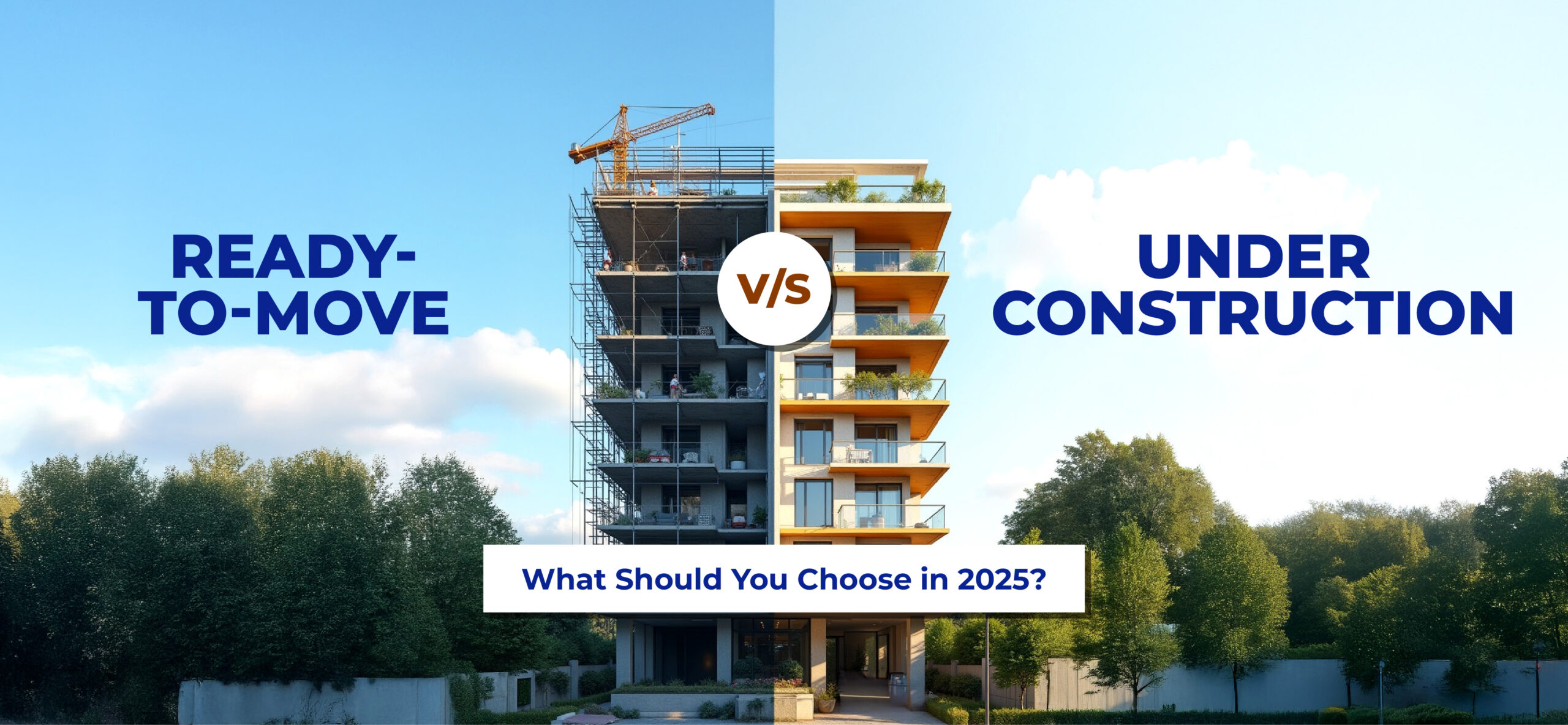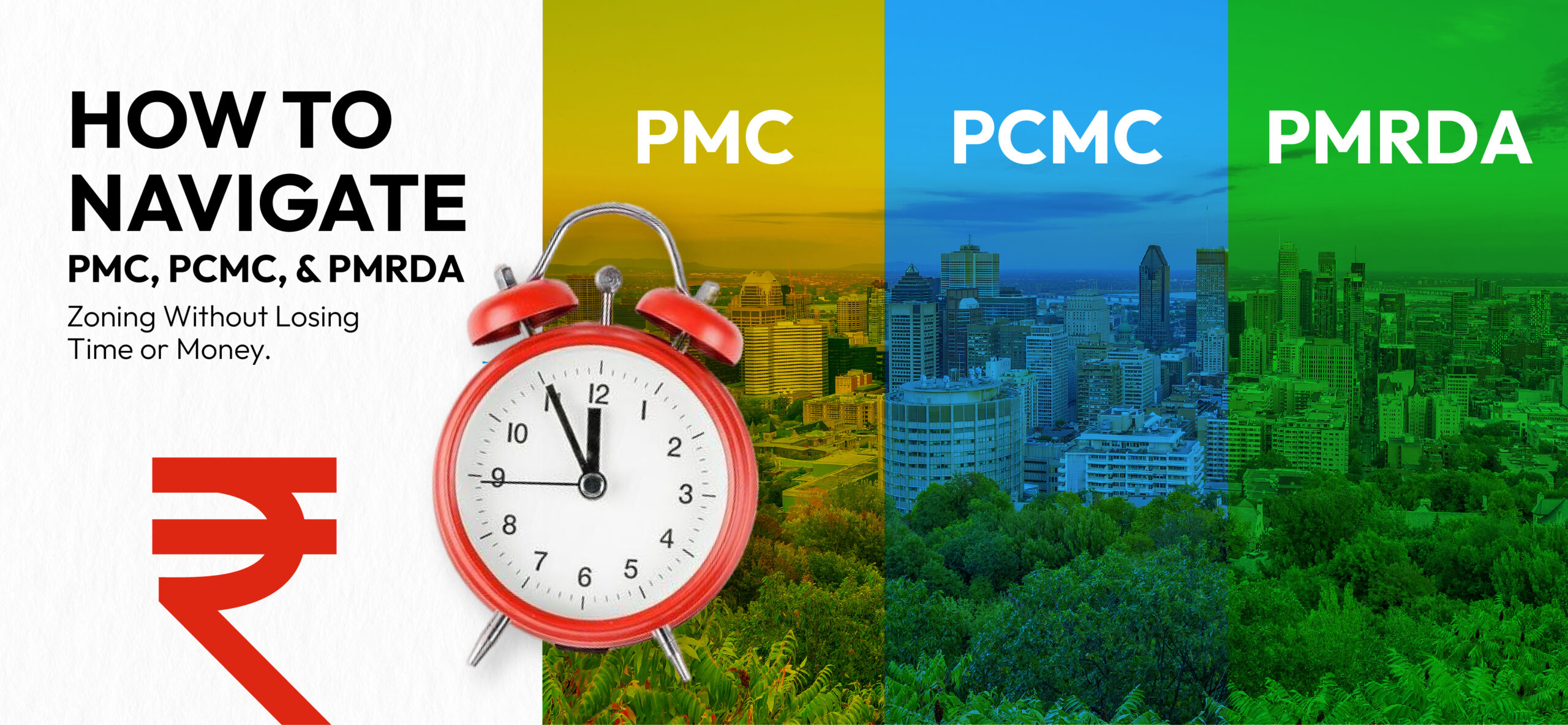Buying a home in 2025 isn’t as straightforward as it used to be. The Indian housing market has matured, buyer profiles have diversified, and lifestyle expectations have grown sharper. One of the biggest choices today? Whether to go for a ready-to-move (RTM) home or commit to an under-construction (UC) property. Both paths offer distinct advantages and trade-offs.
This blog breaks down the differences so you can align your choice with real-world needs, such as shifting timelines, property investment goals, or long-term flexibility. It’s about making a real estate choice that aligns with your life stage, risk tolerance, and future plans.
What Defines a Ready-to-Move Home?
A ready-to-move home is one where the project is complete and possession is available as soon as the necessary paperwork is completed. These homes appeal to individuals who want to move in without delay, particularly families, senior citizens, and buyers seeking to avoid uncertainty.
The benefits are clear. There’s no EMI burden before moving in, and what you see is exactly what you get. For many, this transparency is a huge relief, especially after years of delay-hit projects across major cities. RTM homes are also exempt from GST as per current regulations, which makes the total cost easier to calculate.
However, this convenience comes at a cost. Property price per square foot tends to be higher, especially in central areas. There’s also limited room for customisation and fewer choices in high-demand locations.
For those ready to move quickly—and willing to pay a premium for certainty—RTM homes offer a solid, low-risk option.
What Is an Under-Construction Property?
An under-construction property refers to a home that is still being built, with possession expected at a future date. These are often booked during the project launch phase or mid-way through construction.
This route appeals to buyers focused on capital appreciation or those looking to enter early in newer developments. Because base prices are lower during the early phases, it can be a viable long-term investment, especially in growth corridors.
There’s also more flexibility. Some projects allow changes in layout or finishes during construction, offering a level of personalisation not available in completed homes. However, the model is accompanied by exposure to delays, shifting timelines, and additional costs. GST applies, and in some cases, home loan EMIs may begin before possession.
UC properties reward those who plan and can absorb a wait, making it a better fit for investors or end-users with longer horizons.
Price Factor: Which Option Is More Affordable?
When comparing ready-to-move and under-construction homes, the pricing story goes beyond the base rate. It’s about when you pay, what extras are involved, and how long you carry those costs.
Ready-to-move homes typically come at a higher property price per square foot. You’re paying for immediate access, zero construction risk, and completed amenities. The upside: there’s no overlap between rent and EMI, and no GST—so what you pay is close to the final cost.
In contrast, under-construction properties start at a lower rate. Early-phase pricing, pre-launch offers, and builder flexibility make them more accessible to budget-conscious buyers. But that initial saving may be offset by GST, maintenance deposits, and pre-possession EMIs in some loan structures.
Here’s how it often plays out:
| Factor | Ready-to-Move | Under-Construction |
|---|---|---|
| Base price | Higher | Lower |
| GST | Nil | 5% (approx.) |
| EMI Timeline | Starts post-possession | May start during construction |
| Risk | Minimal | Moderate to High |
| ROI Potential | Medium | Higher (if well-timed) |
For buyers evaluating investment return, the lower entry cost of UC homes can be attractive—but only if backed by strong project timelines and builder reputation.
What Does RERA Say About It?
RERA (Real Estate Regulatory Authority) has shifted the dynamics—particularly for under-construction homes. Before RERA, delays, vague delivery timelines, and shifting specs were common. Now, developers must register projects, provide clear delivery dates, and face penalties for missing them.
For buyers, this means greater transparency—especially with UC properties. You can track approvals, layout changes, legal titles, and financial disclosures on the official RERA portal.
That said, RERA doesn’t erase all risk. Buyers still need to verify project registration, completion percentages, and past builder records. A RERA certificate adds trust—but due diligence still matters.
Whether you’re buying now or waiting, RERA helps level the field and protect your home buying decision in a shifting housing market.
Ready-to-Move vs Under-Construction: Who Should Choose What?
The choice between ready and under-construction homes often comes down to lifestyle stage, financial flexibility, and risk tolerance.
First-time buyers usually lean toward ready-to-move options. There’s no waiting period, fewer surprises, and a smoother financing process. Plus, the absence of pre-possession EMI can ease early financial strain.
Investors and long-horizon buyers often prefer under-construction homes. Early pricing, flexible payment plans, and potential property investment upside make this route more appealing if you’re focused on real estate ROI.
Senior citizens typically prioritise ease of access, stable environments, and certainty. For them, RTM homes are the clear choice.
NRIs often take a hybrid approach. Many opt for RTM homes in city centres for convenience and verified handover, but also invest in branded UC projects in developing zones for future value.
Budget buyers may find UC homes more accessible, especially when paired with staggered payment schedules and builder discounts during launch phases.
| Buyer Segment | Best Option | Why |
|---|---|---|
| First-time Buyer | Ready-to-Move | Fewer unknowns, immediate use |
| Investor | Under-Construction | Higher returns, lower entry cost |
| Senior Citizen | Ready-to-Move | Quick access, no delay |
| NRI | RTM / Branded UC | Depends on use vs investment goals |
| Budget-Conscious | Under-Construction | Affordable booking, phased payments |
Market Trends: What 2025 Tells Us
The post-COVID market has left a lasting impression on Indian homebuyers. In 2025, there’s a growing preference for ready-to-move homes, largely due to lessons learned from past possession delays and stalled construction activity. Buyers today are more conscious of delivery records, builder reputation, and financial overlap between rent and EMI.
At the same time, under-construction properties—especially in well-connected, high-growth corridors—continue to attract investors. Projects near metro lines or within future smart zones offer higher appreciation potential when timed right.
The smarter buyer in 2025 is no longer led by discounts alone. They are aligning purchase decisions with long-term goals, financial bandwidth, and lifestyle readiness.
On Final Note: What Should You Prioritize?
If you want a home you can move into without waiting, ready-to-move makes more sense. The pricing might be slightly higher, but there are fewer unknowns, no GST, and no dual burden of rent and EMI. It’s a strong fit for families, senior citizens, or anyone buying for end use.
On the other hand, under-construction works well if your timeline is flexible and your goal is capital growth. Lower entry pricing and better scope for appreciation make it attractive for investors and long-term planners.
Whether you’re looking to shift soon or plan ahead, 2025 offers strong opportunities across both formats—ready-to-move and under-construction.
If you’re looking for stability and speed, explore completed homes in trusted Pune localities. These options offer transparency, livability, and fewer financial surprises.
If you’re investing for the future or seeking more flexibility in pricing, under-construction projects in upcoming zones offer higher potential returns. Just make sure the site is RERA-approved, the builder has a reliable track record, and the timeline works for you.
Speak with our property advisors to align your goals with the right project.
Explore top Pune property listings on BeyondWalls.com and make a confident move today.



